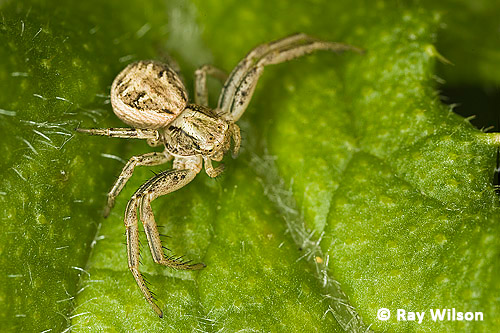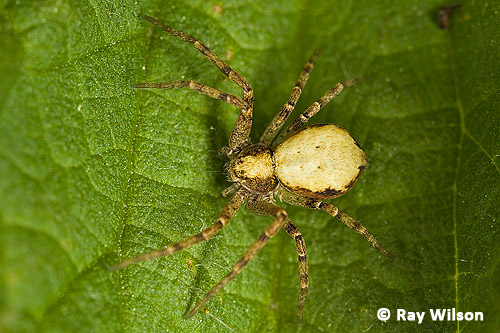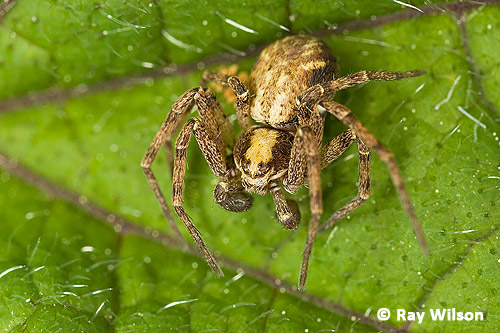
Thomisidae
Crab Spiders
The Thomisidae, which gets its common name from the resemblance of the majority of its members to crabs, is a large family of around 3000 species. They do not build webs for the capture their prey relying mostly on ambush tactics instead, although a few species also actively hunt.

female Misumena vatia - Anglesey, Wales - May 2009
Some crab spiders, such as Misumena vatia (above), are able to change their colour to match the flower they are sitting on. The colour change is triggered by visual cues and in the case of M. vatia takes between 10-25 days to change from white to yellow, but only 6 days to change back.

female Xysticus cristatus - East Yorkshire, England - May 2009
Most crab spiders are small (2-5mm) with cryptic brown markings which aid in their camouflage when sitting on the ground, tree trunks or dead vegetation. Xysticus cristatus (above and below) is the commonest of the British species.

female Xysticus cristatus - Anglesey, Wales - March 2009

female Xysticus sp. - Cheshire, England - May 2009
The 12 British members of the genus Xysticus are all very variable in their markings and colouration, and can only be confidently identified by examination of their epigyne (females) or palps (males).

male Xysticus erraticus (probably) - Anglesey, Wales - July 2008

Xysticus sp. killing a Common Harvestman (Phalangium opilio)- Anglesey, Wales - July 2008
The Common Harvestman is a fearsome predator in its own right, but in this battle it was no match for the crab spider.

Xysticus sp. killing a Common Harvestman (Phalangium opilio)- Anglesey, Wales - July 2008
Ray Wilson owns the copyright of all images on this site.
They may not be used or copied in any form without prior written permission.
raywilsonphotography@googlemail.com